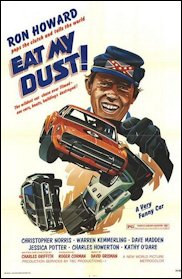It’s amazing how Self-Driving Cars (SDCs) have burst into the consciousness of thinkers about transportation and urban development in the past month or two. Even more remarkable, the thinking hasn’t yet polarized into Republican/ Democratic, left wing/right wing camps. Eric Jaffe, a contributing writer to the center-left Atlantic Cities blog, has just written how a dynamic and innovative private sector may well leap-frog an ossified and gridlocked government sector to create the nation’s next transportation revolution, driverless cars — a position with which I largely concur.
Jaffe’s post was inspired by an article by Clifford Winston and Fred Mannerling in Economics of Transportation. I quoted the same article earlier this week in a post about properly taxing trucks to cover the damage they cause to roads and highways. That was just one of several opportunities created by new technology for government to wring greater efficiency from the nation’s transportation network. Unfortunately, the forces of inertia are great. Write Winston and Mannerling:
Our discussion of policymakers’ failure to implement this technology has culminated in the eternal debate over whether the public or the private sector is better able to spur technological change that contributes to growth. In the case of highways, we conclude that it is likely that the private sector will eventually implement driverless car technologies, and that those technologies will benefit motorists by leapfrogging the technological advance that the public sector has put on hold.
As Jaffe observes, government could implement many useful changes right now: “Proper road pricing could decrease traffic, not to mention generate transportation revenue. Better pavement design could reduce maintenance costs and vehicle damage. Stronger traffic control systems could improve safety on the road.” But government officials, he suggests, suffer from a bias toward the status quo.
Federal, state and local governments will get around to implementing those strategies eventually. They’ll just take way longer than it will take the private sector — driven by competition, the profit motive and organizational cultures that reward innovation — to put driverless cars on the road.
Unfortunately, government — or, more precisely, the tort system — still can muck up driverless cars. The key issue is liability for automobile accidents. As I hope to elaborate in a future article, our tort system is peculiarly mal-adapted to Self-Driving Cars. There can be little doubt that SDCs, which don’t get distracted, don’t get road rage and don’t drink, smoke dope or fall asleep at the wheel, will cause fewer accidents than humans. But the electronic components that make them safer overall create a special problem in individual court cases. The coding inside the software is so complex that it is impossible for automakers to prove that a flaw in the code did not cause an accident.
Writing in the Wall Street Journal, Don Howard and Mark P. Mills sing the praises of SDCs and address the liability issue head-on:
Self-driving cars shift liability for accidents from people, with relatively shallow pockets, to the deep pockets of manufacturers. …
The self-driving-car solution is clear. Congress should pre-empt [the National Highway Traffic Safety Administration] and the trial lawyers and pass a National Autonomous Vehicle Injury Act. The Fords and Nissans and Googles and Qualcomms should voluntarily create an Autonomous Vehicle Event Reporting System. And industry players should also create a National Autonomous Vehicle Compensation System.
Ideally, there would be a national legal standard. But if Congress is too gridlocked to act, the states should enact their own solutions. C’mon, Virginia, it’s time to get moving.
Update: I am informed that included in the FY 2015 budget is $1 million to support an inter-departmental work group to “identify regulatory challenges related to the development, testing, and use of unmanned technologies across all modes of conveyance. The work group shall suggest strategies to attract and promote the development of unmanned technology applications and companies, federal research at facilities located in the Virginia, venture and human capital, and applied research and technology that contribute to the growth and development of the unmanned systems sector in the Commonwealth.”



